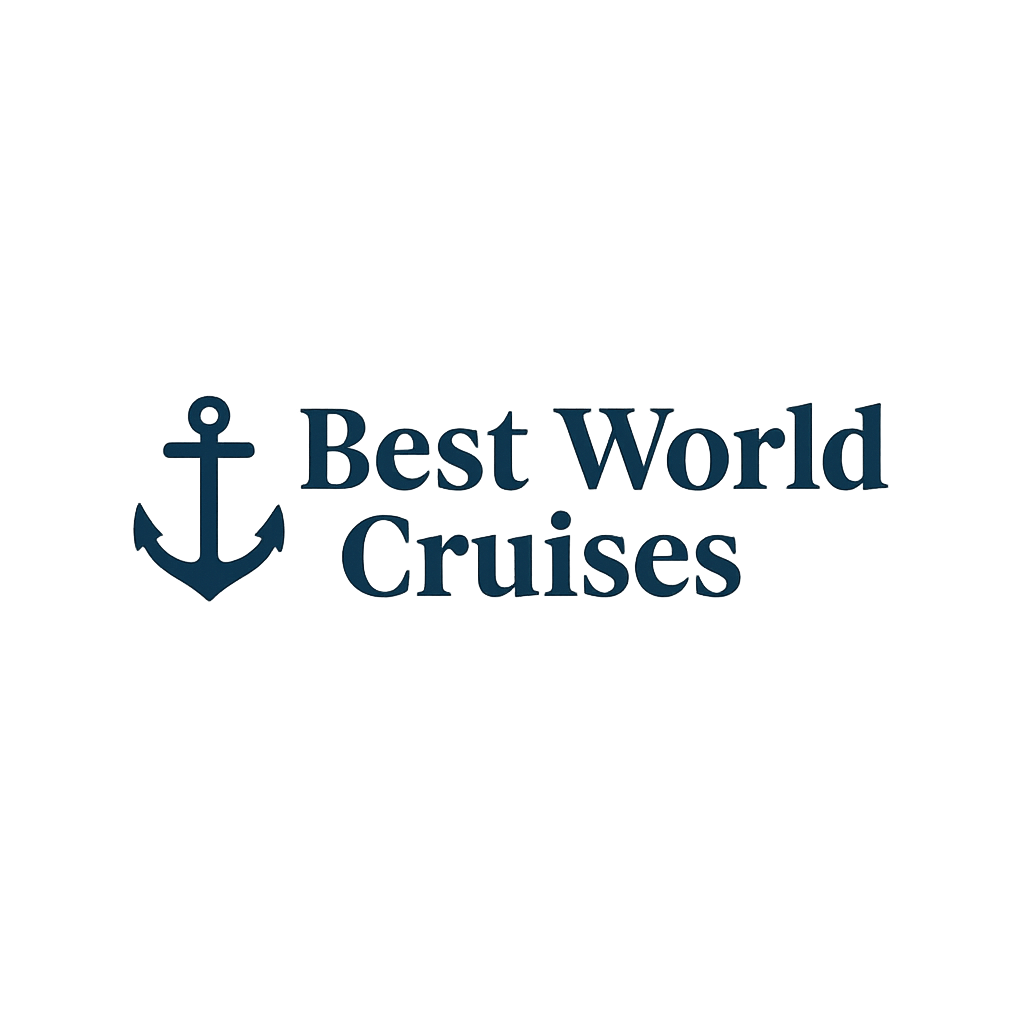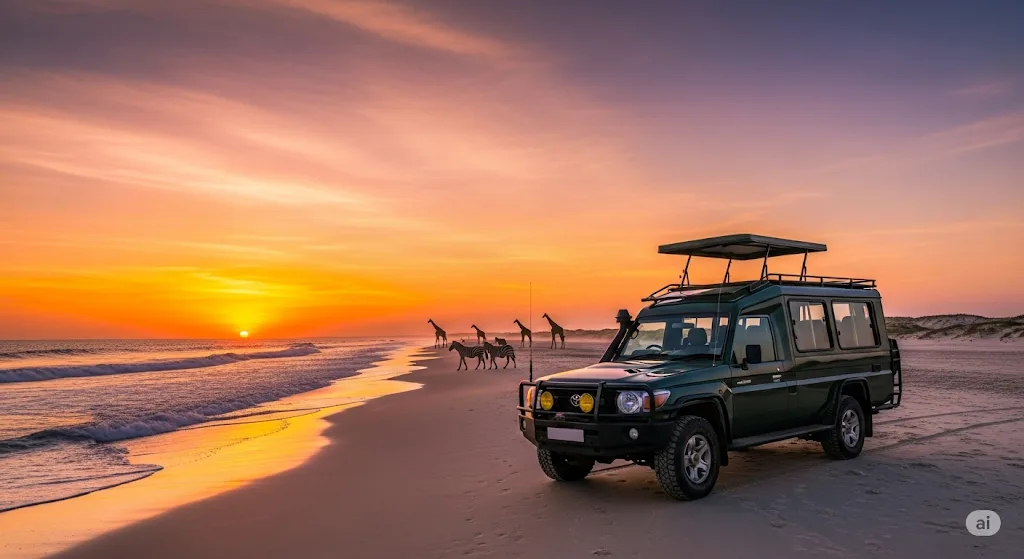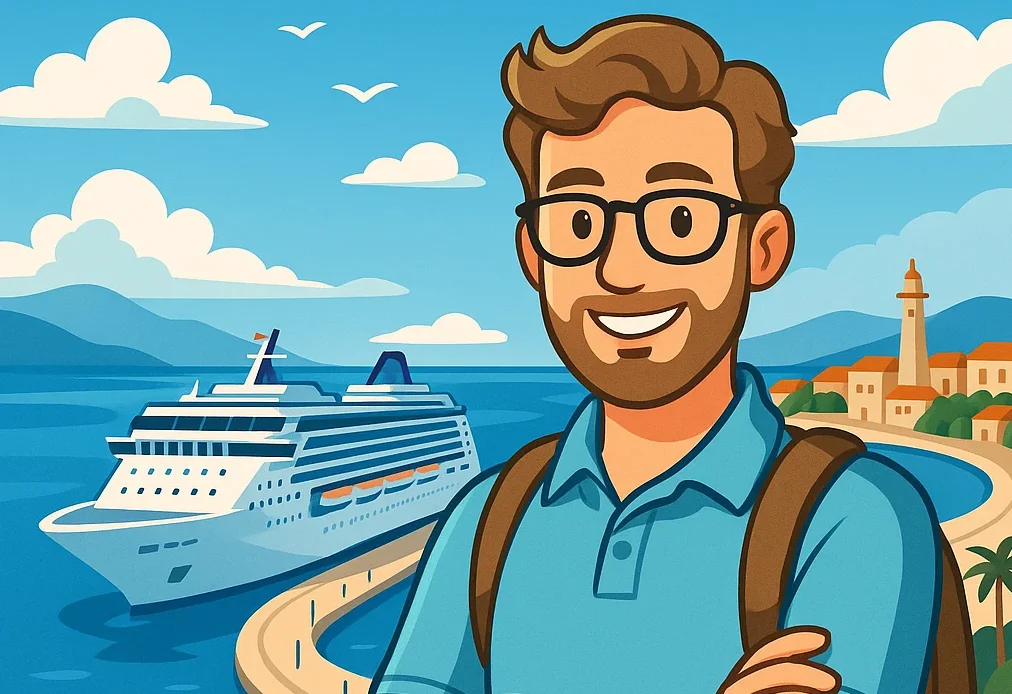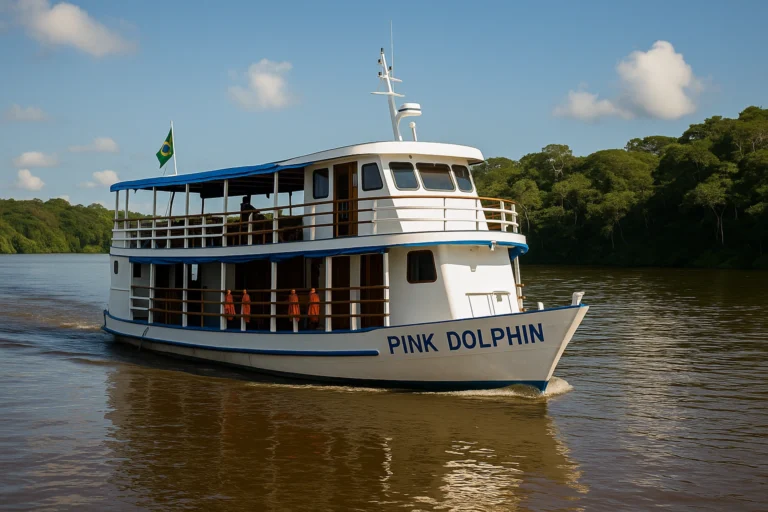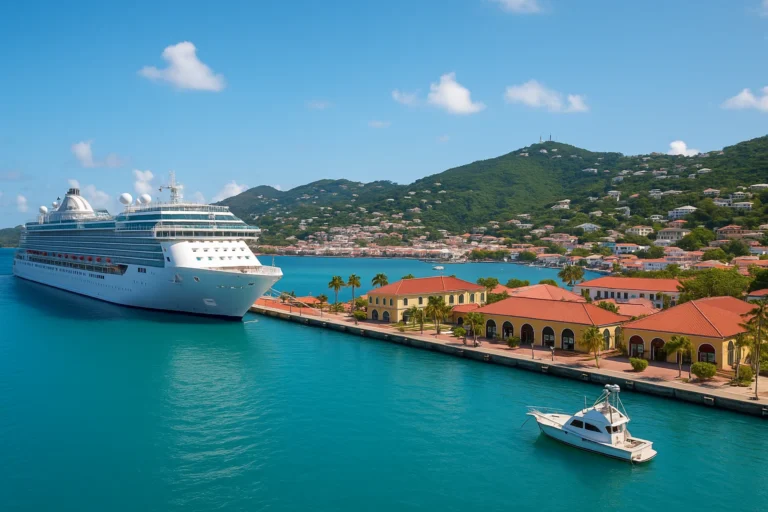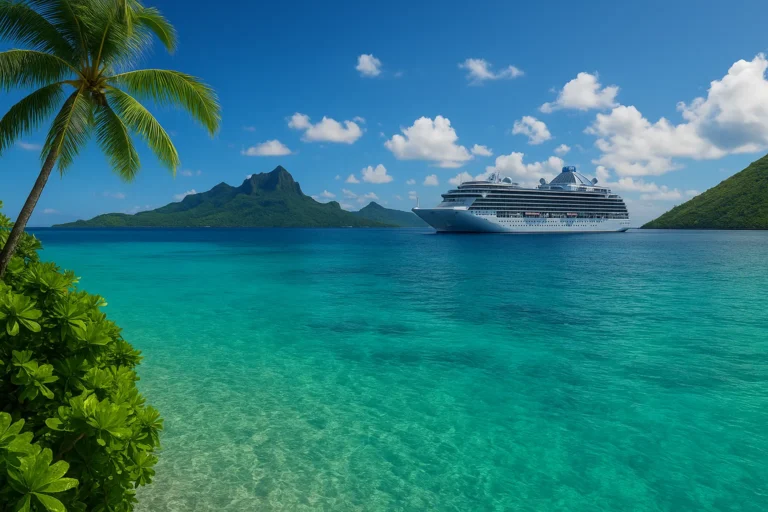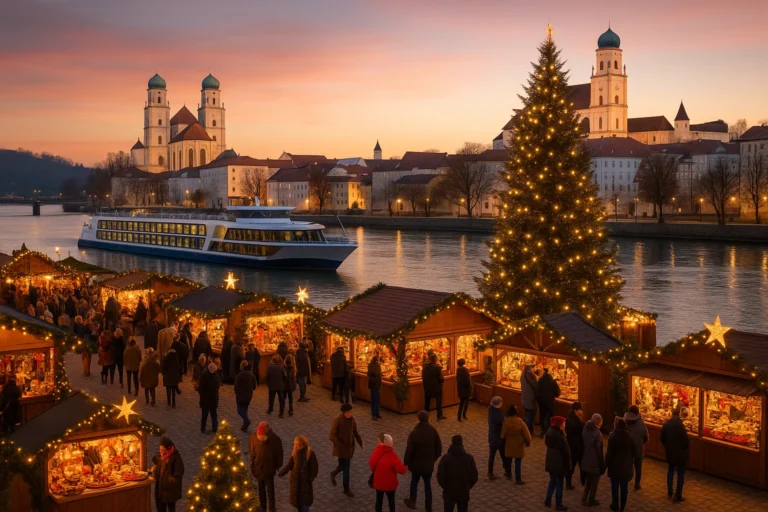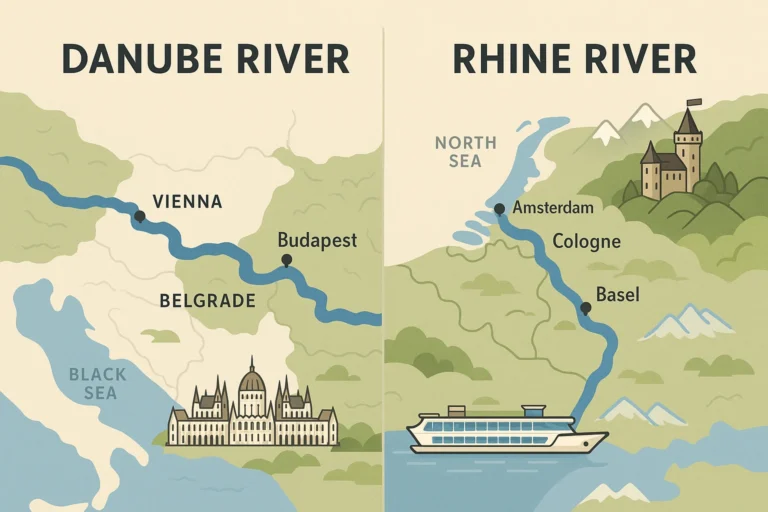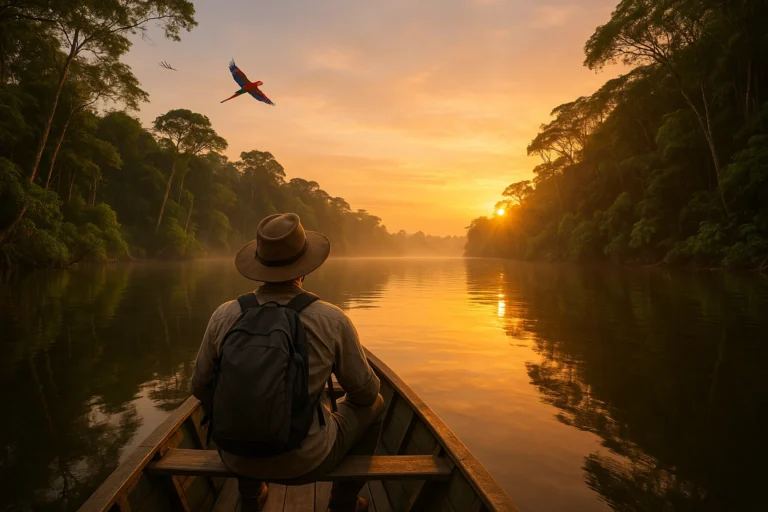From Safari to the Sea: The Ultimate Cruise and Land Adventure in Africa
I. The Safari Experience: Untamed Land and Majestic Wildlife
The first half of your ultimate African adventure begins on the vast, sun-drenched plains of the continent’s most iconic national parks. A safari is a journey into a world where nature reigns supreme, offering an intimate look at the intricate balance of the ecosystem. This leg of the trip is focused on wildlife viewing, immersing yourself in the sights and sounds of the bush. Your adventure will be defined by the thrill of the chase, the quiet awe of a lion’s gaze, and the collective heartbeat of the wilderness at night. A safari is an experience that transforms you, challenging you to see the world from a different perspective and to appreciate the fragility and power of life.
1. Iconic Destinations and the “Big Five”
Choosing the right safari destination is crucial for a memorable experience. **Serengeti National Park** in Tanzania and the **Maasai Mara National Reserve** in Kenya are renowned for the Great Migration, where millions of wildebeest, zebras, and gazelles traverse the plains in search of fresh grazing lands. These parks offer excellent opportunities to spot the “Big Five”—lion, leopard, elephant, rhinoceros, and buffalo. In South Africa, **Kruger National Park** is a popular choice, known for its well-maintained infrastructure and high density of wildlife. Here, the chances of seeing both black and white rhinoceros are among the best on the continent. Botswana’s **Okavango Delta** provides a unique water-based safari experience, exploring the lush waterways in a mokoro (traditional canoe) to get up close with hippos and crocodiles. Each of these destinations offers a distinct flavor of the African safari, from expansive savannas to dense bushland, ensuring a truly immersive wildlife encounter. Experienced guides, often with local knowledge passed down through generations, are key to tracking animals and providing invaluable insights into their behavior and the ecosystem. In addition to these classic destinations, consider **Etosha National Park** in Namibia, famous for its salt pan that attracts an incredible variety of animals, and **Virunga National Park** in the Democratic Republic of Congo, where you can trek to see mountain gorillas, a profound and emotional experience.
2. Activities and Safari Lodging
Safari accommodations range from rustic-chic tented camps to luxurious lodges. A **tented camp** offers an authentic, back-to-basics feel, allowing you to hear the sounds of the bush from your bed while still enjoying modern comforts. **Luxury lodges** provide an unparalleled level of service, often featuring private plunge pools, gourmet dining, and panoramic views of the wildlife-rich landscape. The core of the safari is the **game drive**, conducted in specially adapted 4×4 vehicles. These drives are typically scheduled for the early morning and late afternoon when the animals are most active. Many safaris also include **night drives** to spot nocturnal animals and **walking safaris** for a more intimate perspective. For a truly unforgettable experience, consider a **hot air balloon safari**, offering a stunning aerial view of the savanna and the animals below. In Kenya and Tanzania, many tourists choose to visit local Maasai villages to understand their culture, dances, and traditional way of life. This phase of your journey is a thrilling exploration of Africa’s heartland, setting the stage for the next, more tranquil chapter of your adventure.
II. The Sea Voyage: Coastal and Marine Wonders
After the dust of the savanna settles, the adventure continues on the serene, azure waters of the African coast. The second part of the trip transitions from the rugged landscape to the calming rhythm of the ocean, offering a chance to relax and discover a completely different side of Africa’s biodiversity. This is where your land adventure meets the sea, providing a stunning contrast of experiences. A cruise or coastal stay is the perfect way to unwind, offering a blend of beach relaxation, water activities, and cultural exploration of seaside towns. This transition is not just a change of scenery but also a change of pace, allowing you to enjoy the tranquility of the sea after the intense energy of the savanna.
1. Coastal Paradises and Island Escapes
The African coastline is dotted with spectacular destinations that are perfect for a seaside escape. **Zanzibar**, with its pristine white-sand beaches and historic Stone Town, offers a rich blend of Swahili, Arabic, and Indian cultures. Its coral reefs are ideal for **snorkeling and diving**, providing a window into a world of colorful fish and marine life. You can also explore the spice plantations that gave the island its nickname, “Spice Island.” The **Seychelles archipelago**, with its granite boulders, lush forests, and stunning bays, is a classic luxury cruise destination. It’s an excellent place for relaxation, hiking, and exploring unique flora and fauna. On the mainland, the **coast of South Africa**, particularly around Cape Town, provides dramatic landscapes where mountains meet the sea. You can combine a safari in a nearby private reserve with a cruise along the rugged coastline, spotting whales and dolphins. The variety of coastal options allows you to tailor the second half of your trip to your desired level of activity and relaxation, from vibrant cultural hubs to secluded, romantic getaways. Another fascinating destination is **Mozambique**, which offers a less-crowded coastline with pristine coral atolls and a vibrant fishing culture. Here, you can explore the **Bazaruto Archipelago**, a protected marine park perfect for spotting dugongs, sea turtles, and for world-class diving.
2. Cruise Experiences and Activities
A cruise offers a unique perspective on the African coastline. Options range from luxury liners with all the amenities to smaller, more intimate yacht charters. A **large cruise ship** provides a floating resort experience, with multiple restaurants, entertainment options, and stops at major ports. A **smaller cruise or yacht** offers a more personalized journey, allowing access to hidden coves and secluded beaches that larger ships cannot reach. Activities during the cruise can include everything from **deep-sea fishing** and **kayaking** to **snorkeling and scuba diving** in some of the world’s most pristine coral reefs. You can also participate in guided tours of coastal towns, visiting local markets and historical sites. This part of the adventure allows you to slow down, reflect on your safari experience, and discover the tranquil beauty of Africa’s maritime world. For a truly unique experience, consider a **river cruise** on the Chobe or Zambezi rivers, combining the safari with boat trips along the banks where elephants, hippos, and crocodiles gather to drink.
III. Planning and Logistics: Tips for a Seamless Journey
Planning a combined safari and cruise adventure requires careful attention to detail, but the result is a perfectly balanced trip. This section offers practical advice to ensure the transition between the two phases of your journey is smooth and enjoyable.
1. The Best Time to Travel
The ideal time to travel to Africa depends on the location and what you want to experience. For an East African safari (Kenya, Tanzania), the **dry season (June–October)** is best, as the vegetation is sparse and animals gather around water sources, making them easier to spot. The Great Migration is typically in Kenya from July to September and in Tanzania from January to March. For a cruise on the coast of South Africa, the **summer months (December–February)** are ideal for warm weather, while the **winter months (June–September)** are best for whale watching. For Seychelles and Zanzibar, the weather is pleasant all year round, with the exception of the rainy season (April–May). Careful planning of your travel dates can optimize your chances of seeing the best landscapes and wildlife.
2. Travel Logistics and Packing
Efficient logistical planning is vital. Many safari-cruise itineraries involve internal flights, often on small charter planes, which have strict baggage restrictions (typically 15-20 kg in a soft-sided bag). Make sure your luggage complies with these rules. It is recommended to have a packing list adapted for both parts of the journey: neutral-colored, comfortable, and lightweight clothing for the safari, and beachwear, swimsuits, and sun protection for the cruise. Don’t forget binoculars, a camera with a zoom lens, a universal power adapter, and a basic medical kit. You can split your luggage into two: a small backpack with the essentials for the safari and a larger bag that you can securely store before you head to the sea.
3. Health and Safety
Safety is a top priority. Consult your doctor a few months before your departure to ensure you have all the necessary vaccinations (such as for yellow fever, hepatitis A and B, tetanus). It is essential to take preventive measures against malaria, depending on the area you are visiting. In addition to sun protection, use a strong insect repellent to prevent mosquito bites. Always respect the instructions of your safari guides and ship’s crew, as they are trained to ensure your safety at all times. It is also recommended to have comprehensive travel insurance that includes emergency medical evacuation.
❓ Frequently Asked Questions
1. How much time should I allocate for such a trip?
A combined safari and cruise trip typically requires between 10 and 14 days. A duration of 5-7 days for the safari and 5-7 days for the cruise is a good balance. This allows you to fully enjoy both experiences without feeling rushed.
📂 Explore More in These Categories
Africa Cruises 2025: Safari, Cape Town & Indian Ocean
Best Cruise Destinations in 2025: Caribbean, Europe & Bucket List Ports
2. Are these trips suitable for families?
Yes, many itineraries are family-friendly. Many lodges and cruise ships have special programs for children, and safari guides are skilled at making the experience educational and safe for the little ones. However, it’s important to check the minimum age requirements for certain activities, such as walking safaris.
3. Is such a trip expensive?
The cost varies greatly depending on the destination, type of accommodation, and the luxury level of the cruise. Such a trip is usually a significant investment, but there are options for different budgets, from tented camps to 5-star lodges and private yachts. Prices can be reduced by traveling during the off-peak season.
💡 Did you know?
South Africa is believed to be the only country in the world where you can see penguins and rhinoceros in the same day? By visiting a private safari reserve near Cape Town and then heading to Boulders Beach, where a colony of African penguins nest, you can accomplish this remarkable feat.
📣 What part of this adventure appeals to you the most: the thrill of the safari or the tranquility of the sea? Let us know in the comments!
